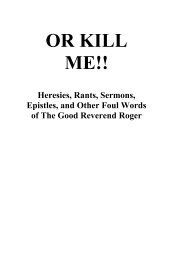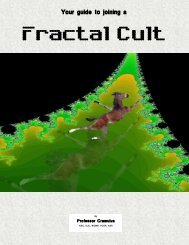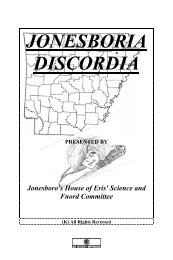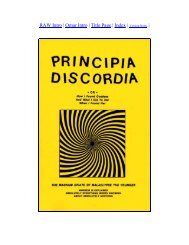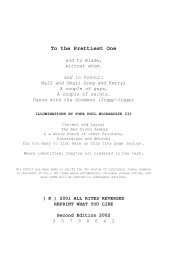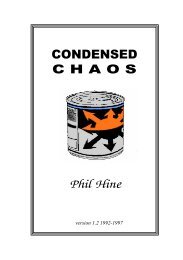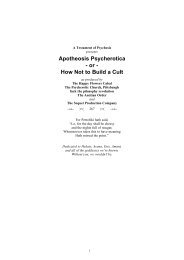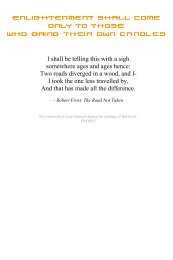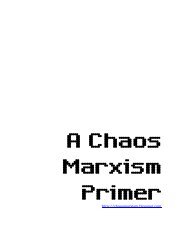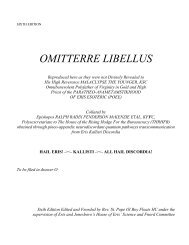Coincidance - Principia Discordia
Coincidance - Principia Discordia
Coincidance - Principia Discordia
Create successful ePaper yourself
Turn your PDF publications into a flip-book with our unique Google optimized e-Paper software.
COINCIDANCE 151<br />
13. When my play Illuminatus opened on the Liverpool street so strangely<br />
linked with jung-beetle-Beatle coincidences, the premiere was November 23.<br />
British playwright Heathcote Williams made a guest appearance as a walkon.<br />
Later, Williams and 1 talked about other writers we knew, and<br />
Burroughs was mentioned, along with the 23 coincidences he had collected<br />
(only a few of which are mentioned above). Williams told me that when he<br />
met Burroughs this subject came up, because Williams had mentioned that<br />
he was 23 years old at the time. When Williams returned to his flat that<br />
night (he had recently moved), he noticed for the first time that the building<br />
across the street was number 23.<br />
14. After Koestler's Roofs of Coincidence was published, Professor Hans<br />
Zeisel, of the University of Chicago law school, wrote to Koestler about a<br />
whole chain of 23s that had haunted his life: he lived at Rossaurerlaende 23<br />
in Vienna, he had a law office at Gonzagagasse 23, his mother lived at<br />
Alserstrasse 23. Once Zeisel's mother was given a novel, Die Liebe Der Jeanne<br />
Ney, and took it with her to Monte Carlo, In the book, a character wins a<br />
great deal by betting on 23 at roulette. Zeisel's mother decided to bet on 23<br />
at roulette. Twenty-three came up on the second try.<br />
15. This whole area, as if it weren't bizarre enough already, took on even<br />
more exotic aspects after a celebrated experiment by Robert Harvie and<br />
biologist Sir Alister Hardy that attempted to demonstrate the reality of<br />
telepathy so totally that the last skeptic would be overwhelmed. The<br />
experiment, conducted in London in 1967, involved 110 trials with 20<br />
subjects in each. Using every possible safeguard to ensure rigorousness,<br />
Harvie and Hardy obtained marvelous results. The subjects, trying to guess<br />
or "telepathically" read target cards they could not see, scored well above<br />
what might have been expected from chance.<br />
Then, as a control, Harvie and Hardy randomized the response sheets.<br />
That is, instead of just comparing the responses of 20 people who were<br />
trying to "see" an invisible target card, as in the experiment proper, Harvie<br />
and Hardy made up groups of 20 response sheets from different people in<br />
different trials. This, they hoped, would prove that chance alone could not<br />
account for the results of the telepathy trials.<br />
SHOCKING CORRELATIONS<br />
What appeared was more shocking than what came out of the initial<br />
experiments. Correlations above chance were found again—correlations<br />
Wildly beyond what could be expected according to probability theory.<br />
What we have here is worse than telepathy from the orthodox view-<br />
Point. Randomizing should have produced fewer correlations, according to<br />
one application of the second law of thermodynamics, which says that



